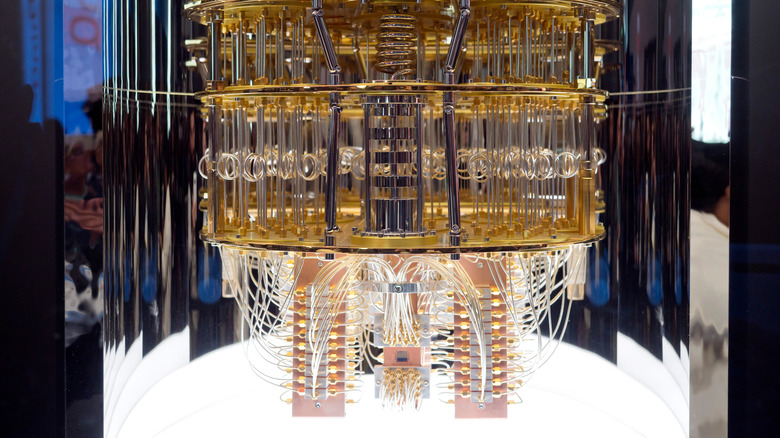Researchers Chain Atoms In Leap Toward Quantum Internet
A group of engineers at Caltech have made an astonishing discovery. According to a new paper published in the journal Nature, chaining atoms together can create quantum storage. The paper is also available via Caltech's website. The authors of the study believe the new approach could even help develop large-scale quantum networks sometime in the future.
Andrei Faraon, professor of applied physics and electrical engineering, led the research. During the study, the engineers embedded an ion of ytterbium (Yb) into yytrium orthovanadate (YV04), a transparent crystal. Altogether, the team used quantum bit – also knows as a qubit – of YB in the crystal. This acted as the central control piece of several vanadium atoms situated around the ion. The researchers were then able to control the nuclear spin states of the atoms using the Yb qubit.
Faraon says that they already knew yyterbium ions were excellent components for quantum networks thanks to prior research the team had done. To enable quantum storage, though, Faraon notes that the team had to figure out how to link the atoms together. The researchers built the machine at the Kavli Nanoscience Institute at Caltech. They then tested it in Faraon's lab at very low temperatures with impressive results. By demonstrating that this technique works, Faraon and his team have provided a foundation to continue building towards quantum networking.
What is quantum networking?
The reason that Faraon, his team, and many others are so worried about quantum networking is because of the benefits that it can bring us. We've already seen how powerful quantum computers can be, enabling us to solve problems that might take months to solve much quicker. However, with a network of quantum computers (otherwise known as a "quantum internet", as Caltech writer Robert Perkins calls it), we would be able to push that speed forward even more.
At its most basic level, quantum computing is designed to make use of photons to store and share information. This allows it to move much faster than traditional computers can. However, when you network these types of computers together, you'd theoretically be able to solve problems that would take years to solve on a traditional computer much faster – in say months or even days. We'd also be able to make use of much harder to hack security applications.
We've already seen some interesting developments from quantum computing – like Google's creation of a time crystal. Above you'll also see on of IBM's quantum computers in all its golden glory. It's all intriguing stuff, and something that will be interesting to watch grow as researchers like Faraon and his team continue to push these ideas further and further.

